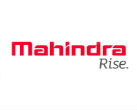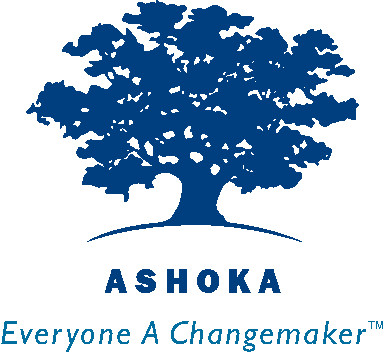

Panelists included Paul Polak and Team (@OutofPoverty), Naandi Foundation(@naandi_india) and Zenrainman @Zenrainman.
The Twitter conference was conducted under the hashtag #SparkTheRise.
The Tweetchat kicked off with Naandi Foundation talking about the work they have done in India to ensure safe drinking water. They take a holistic approach towards reduction of poverty, and highlighted the work they have done to achieve this:
- Education:100,000 children across 1,800 government schools
- Livelihoods: Worked with 20,000 coffee farmers in Araku, largest tribal co-operative producing coffee
- Water:Providing sustainable, affordable, drinking water solutions, impacting 600,000 people
- Health:Initiated the country’s first large-scale malnutrition survey, capturing 100,000 voices
- Midday Meal: 1.2 million kids fed through 25 centralized kitchens across 5 states
Some interesting debates came up in this session. Naandi Foundation works closely with the government in its initiatives, to achieve scale and to reach remote areas of India. This is a model that many NGOs and funding agencies are now looking at to scale development solutions. However the systemic issues with working within the government system are well known, and are a huge challenge to overcome. The near future, however, does call for greater integration between civil society organisations and government systems, if we are to truly achieve scale in any realm of development.
Naandi's Safe Drinking Water programme ensures drinking water through the installation of community drinking water Reverse Osmosis plants. Their immediate goal is to touch 5 million lives across 2,000 villages in India through various interventions. More specifically, they aim to get safe, affordable drinking water to 2 million people by 2018. They also want to mainstream their service delivery model for others to replicate. Naandi Foundation believes that community mobilisation is crucial for the successful implementation of any programme focused on WASH, and only begins their work in villages once community trust is gained.
The government can play a significant role in bettering the quality of water in rural India. There are several government-backed rainwater harvesting projects in India too, in states like Kerala, Tamil Nadu, Karnataka and Gujarat, according to Zenrainman, the second panelist for the Tweetchat. Another potential way to improve basic access to water, is for the government to encourage and empower communities to revive traditional water harvesting structures and systems. Ancient wisdom from centuries past was very effective in conserving water sustainably, much before the dawn of technology and engineering solutions. Today, this wisdom becomes even more relevant in the face of the growing water scarcity we are seeing everywhere around us.
The second session with @Zenrainman kicked off with a discussion on what people need to know about rainwater harvesting, and whether there are any specific things to keep in mind. Zenrainman who is an expert on rainwater harvesting and water issues in India, maintains that common sense is key: it’s as simple as catching rooftop water, filtering it and storing or recharging it. A question from the audience was that if it was this simple, then what exactly was stopping people from employing it? To which Zenrainman's answer was that initial capital cost is a big obstacle, along with government assurances of piped water supply. People end up waiting for this indefinitely, as is the case in Bangalore with the BWSSB’s Cauvery project. This should not be the case - citizens should take matters into their own hands and do their bit to conserve water.
Some interesting case studies on rainwater harvesting were shared in this session:
- Gansu Institute’s work in rainwater harvesting is one of the best examples of rainwater harvesting at scale. Their goal was to create 2.5 million RWH structures in Gansu Province, China, an area that gets just 250 mm of annual rainfall.
- A video on how rooftop rainwater is harvested in a rural setting
- A government programme in Karnataka called Sachetana is helping 10,000 families access fluoride-free water
- In Bangalore, the mother of all Rain Barrels
- Harvesting has been traditional in Jaisalmer /Jodhpur in Rajasthan, which gets just 150 mm of annual rainfall.
One participant made an interesting comment that it was surprising that people do not seem to calculate the return on investment for rainwater harvesting, when they do for solar heaters. Could this be because the water crisis hasn't become as severe as the power crisis? This behaviour might change once water shortages become a reality in urban India.
Naandi Foundation recommends implementing large-scale, community-based water recharge programmes, if an institution has the capacity to do so. They also suggest re-working intensive farming policies to avoid polluting groundwater resources, and to encourage integrated watershed management. This is the need of the hour in managing water resources sustainably.
It wasn't surprising to see some audience members asking about rainwater harvesting ín urban areas, given that most Twitter users are Internet-savvy, and hence urban citizens. One user assumed that it was easy to go for rain water harvesting in rural areas, but wanted to know more about how to implement it in cities and urban areas. Another participant mentioned that rainwater harvesting in Delhi was made compulsory more than a decade ago ago, but the move was largely a failure. Yet another participant asked if it was possible to take advantage of rainfall in urban agglomerations, like in high-rise apartment clusters in cities like Mumbai. Zenrainman's response was that with 120 rainy days in a year, even one day's storage should help a lot in urban high rise complexes.
A great suggestion that was retweeted by several participants, was that incentives must be created for builders to conserve water and implement rainwater harvesting. City officials should use rainfall storage in urban areas, in order to make water cheaper and more accessible for all. Similarly, communities are willing to help themselves, provided that they are offered the incentives to do so. A wonderful suggestion from a participant in response to this, was the possibility of offering tax credit for rainwater harvesters, to reward those who have done it and encourage others to take it up. The flip side to this arguement is that good clean water should be incentive enough; why should we wait for it to run out before we act? However, in an ideal world this would be a great achievement, but in the real world, many participants maintained that most Indian companies and cities would need incentives. One participant, @rakeshmani however tweeted that this was a rather ironic suggestion, and its practicability was questionable: "We're in India. We used to steal electricity." However the topic ended on a hopeful note with many participants agreeing with the basic premise: "We have to believe, be stringent for [the] first few years and keep on pushing via awareness. It's not impossible." Rakesh Mani tweeted, "There's irrationality in hope. But yes, to some extent this should work."
Water management in India is a complex topic. Especially with regard to domestic water, we are a groundwater civilisation. This is where a water management framework is desperately needed in India. In the meanwhile, people and communities are best placed to manage their own water systems. India has a long and diverse history of traditional wisdom around rainwater harvesting, dating back centuries. The need of the hour is to empower communities to tap into that wisdom.
But do costs make this unsustainable? Zenrainman is quite clear that helping people to help themselves is the answer. While this solution is high on capital cost, it is very low on operation and maintenance costs. We need to adopt a lifecycle cost approach. Zenrainman was firmly of the opinion that incentives and subsidies must be done away with, and that people who can afford to pay the price of water must pay it.
Rainwater, surface water and groundwater interfaces need holistic management, which is unfortunately currently missing in India. We have reached a point where we simply cannot impose a limit of 150 litres per capita per day and 55 litres per capita per day in rural areas, irrespective of water availability. The true cost of water has to be recovered, in order to make service delivery sustainable while still ensuring the basic lifeline right to water for the marginalised and poor.
Anyone can start conserving water by doing something small; Zenrainman's advice was to not stop at knowing, and to avoid intellectual paralysis. Install a system and learn from it. Ashoka India suggested helping a government school harvest rainwater, while teaching and learning with students and teachers at the same time. Another participant tagged Teach for India in this comment, saying it was a great idea for them to think about.
Whatever the solution, the fact remains that India is a groundwater civilisation, and moreover a groundwater-dependant country. From Kalibangan (3000 B.C.) and Dholavira-Lothal to today with more than 20 million borewells, we are extracting groundwater much faster than we are putting it back in the ground. Another option in a basket of possible solutions is new-age waterless innovations, which could be the way forward for India to achieve sustainability in access to water for all.
The third session with Paul Polak kicked off with participants asking what he thought about safe drinking water as a business. His response was that governments give reasonable regulations and safe drinking water to people who do not have access to the market, thus ensuring a basic lifeline water supply. There is also the very real fear that priced water could go the micro-finance way without any regulatory framework in place, which is why Paul Polak's team does disciplined water testing at each point in the last mile supply chain of their work.
One myth about poverty eradication that Paul Polak found through his work in India, was the idea you can donate people out of poverty. Yet again, the concept of people doing things for themselves was raised, highlighting the importance of building the capacity of communities to find their own solutions. India has to move from a welfare state to a state the empowers its citizens to find solutions for themselves.
Paul's advice to new entrepreneurs venturing into uncharted regions like water supply and service delivery, was to find initial funding from family, friends, angel investors and social venture capital funds. A suggestion from Shyamal Dave was that crowdfunding could also go a long way in helping new entrepreneurs venture into this space, if properly structured and implemented. Paul added a note of caution to this suggestion, that in order for crowd funding to be successful, thorough preparation was required.
Some sustainable irrigation models that help farmers ensure that they don't waste water resources, are affordable low cost drip and sprinkler systems. These are stingy ways to deliver water and improve agricultural yields. This in turn is a way of saving water, by harvesting the water that has not been used. The common man is quite receptive to implementing rain water harvesting measures for himself, but larger schemes require technical assistance and education.
A question from Shrey Goyal, a participant in the Tweetchat, posed to Paul Polak and his team was how to prevent scale and/or commercial money from diluting social motive and impact. Paul's response was to build social impact into the mission and DNA of a social enterprise from the very beginning. Attractive profits attract global commercial investors, who have more capital available than foundations; these global investors provide the most direct way to achieve scale. So rather than government systems or community empowerment, Paul Polak advocates to make water supply and service delivery a business-minded model in India.
All in all, the panel was very well balanced with all view points fairly represented. We hope that this is the start of a bigger global discussion on water, and the need to manage it sustainably.
/articles/sparktherise-twitter-conference-water-sustainability-key-our-future-mahindra-and-ashoka